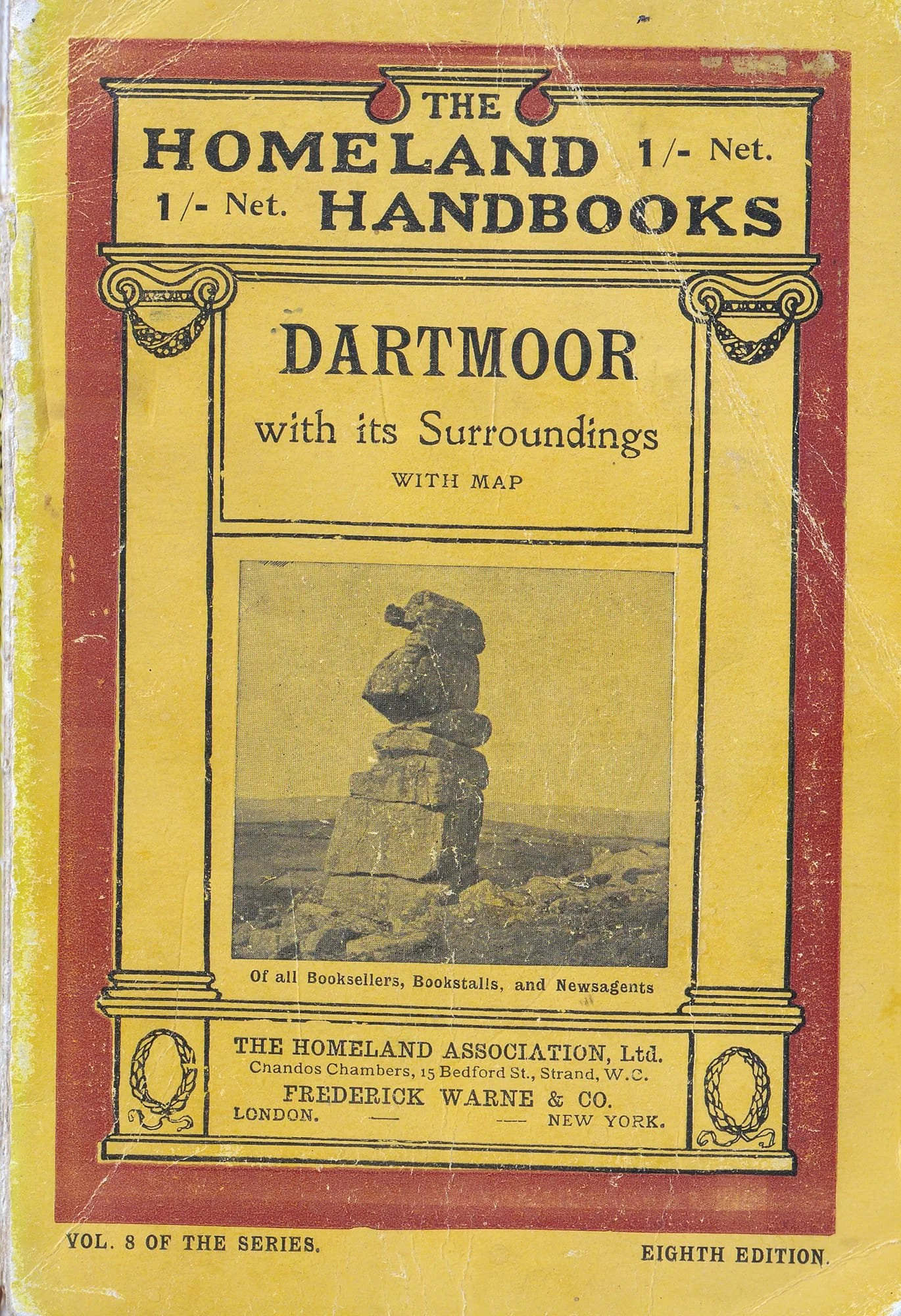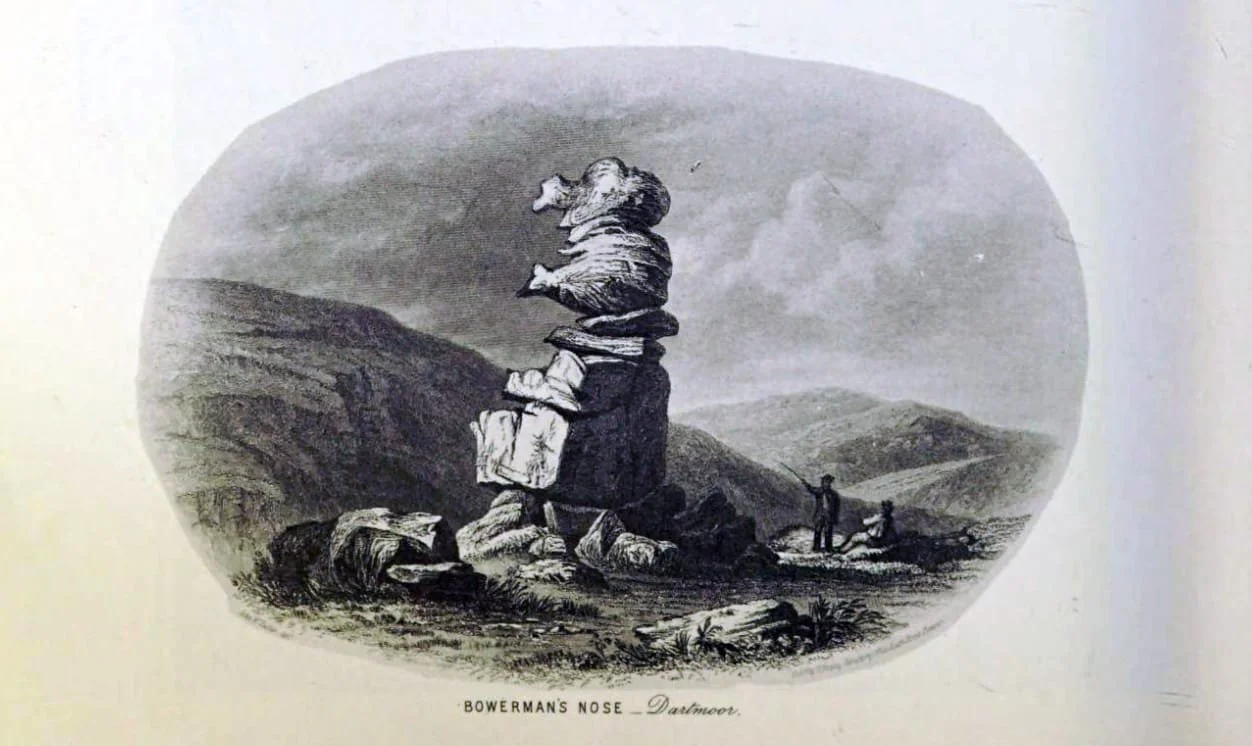Bowerman’s Nose or “Legends are like memes in slow motion”
THE WHOLE OF THIS ARTICLE IS IN FLUX - COME BACK IN A FEW DAYS TO SEE HOW IT’S CHANGED 😁
This entry was originally posted on my Facebook page and then I discovered some more information and decided to use it as the basis for my “Hill Talk” which is a part of the assessment to gain the Hill & Moorland Leader Qualification.
I’ve not got around to editing this yet - so what is below, isn’t the final blog entry - come back when it’s complete … you’ll know when that is because this text won’t be here 🤣
Bowerman's Nose - shot on a crappy Pentax 110 lens adapted for my Sony a7r ... I quite like the effect ... do you know the legend behind the name?
As with most myths and legends there seems to be little logic or even the pretense of coherence between the various lines of thought ... one idea revolves around the belief the stack of rocks was some kind of Rock Idol (and we're not talking Jimi Hendrix here) ... commentators even suggesting that Druids carved the stones to this shape 😁
This idea seems to be prevalent in the early nineteenth century - drawing a lot of weight from Plymouth born poet Nicholas Toms Carrington in his "Dartmoor" poem ... circa 1834
“On the very edge
Of the vast moorland, startling every eye,
A shape enormous rises ! High it towers
Above the hill’s bold brow, and, seen from far.
Assumes the human form ; - a Granite God !
- To whom, in days long flown, the suppliant knee
In trembling homage bow’d. The hamlets near
Have legends rude connected with the spot,
(Wild swept by every wind,) on which he stands
- The Giant of the Moor.”
Carrington himself, writing in the notes to his poem says;
“This is an enormous mass of stone or pile of rocks upon Heighen Down in Manaton, rising to a height of more than 30 feet. At a distance it wears the appearance of a rude gigantic figure, but, on a nearer approach, it is found to consist of ledges of granite, irregularly piled on each other. It is generally considered as a rock idol, and bears the name of Bowerman’s Nose, of which name there was a person in the Conqueror’s time, who lived at Huntor or Houndtor in Manaton. In the road from Two Bridges to Tavistock Dr. Berger and his friend Mr. Necker were both struck at once with the resemblance of a granite rock to the Egyptian Sphinx in a mutilated state.””
He goes on to expound the idea that those who think druids didn't have anything to do with Dartmoor are obviously deluded.
In 1900 the famous Rev Sabine Baring Gould in his "A Book of Dartmoor" says unequivocally that:
“There are, indeed, to be seen curious piles of rock, but none of these are artificial, and there is not a particle of evidence that any of them received idolatrous worship.”
Being a Christian it's not surprising he's keen to distance himself from the idea of druids (just pointing out, not judging).
Now, many of you (who are perhaps aware of the witch/hare/hunter/hounds scenario) will be wondering where the hell that perfectly formed story is in my ramblings ... and that's where it gets interesting (well, at least to me).
I've always (I believed) been aware of this story ... proud hunter, witches, yadda yadda ... guess what? Seems to have zero basis in anything ...
My own copy of "The Homeland Handbooks - Dartmoor" ... 1913
In fact, whilst re-reading my own copy of "The Witchcraft and Folklore of Dartmoor" by renowned local journalist and author from Sticklepath; Ruth E. St. Leger-Gordon; I was surprised to notice this observation from a Dartmoor resident famed for collecting stories about witches and local folklore;
"𝐵𝑜𝑤𝑒𝑟𝑚𝑎𝑛 𝑖𝑠 𝑡ℎ𝑒 ℎ𝑎𝑟𝑑 𝑐𝑜𝑟𝑒 𝑜𝑓 𝑎 𝑠𝑚𝑎𝑙𝑙 𝑡𝑜𝑟, 𝑛𝑜𝑤 𝑙𝑦𝑖𝑛𝑔 𝑖𝑛 𝑎 𝑐𝑙𝑖𝑡𝑡𝑒𝑟 𝑜𝑓 𝑓𝑎𝑙𝑙𝑒𝑛 𝑟𝑜𝑐𝑘 𝑎𝑟𝑜𝑢𝑛𝑑 ℎ𝑖𝑠 𝑓𝑒𝑒𝑡. 𝑊𝑒𝑎𝑡ℎ𝑒𝑟𝑖𝑛𝑔 𝑜𝑓 𝑡ℎ𝑒 𝑔𝑟𝑎𝑛𝑖𝑡𝑒 𝑐𝑟𝑎𝑐𝑘𝑒𝑑 ℎ𝑖𝑠 𝑝𝑟𝑜𝑡𝑒𝑐𝑡𝑖𝑛𝑔 𝑠ℎ𝑒𝑙𝑙 𝑎𝑛𝑑 ℎ𝑒 𝑒𝑣𝑒𝑛𝑡𝑢𝑎𝑙𝑙𝑦 𝑒𝑚𝑒𝑟𝑔𝑒𝑑 𝑖𝑛 ℎ𝑖𝑠 𝑝𝑟𝑒𝑠𝑒𝑛𝑡 𝑓𝑜𝑟𝑚 𝑙𝑖𝑘𝑒 𝑎 𝑐ℎ𝑖𝑐𝑘𝑒𝑛 𝑓𝑟𝑜𝑚 𝑎𝑛 𝑒𝑔𝑔. 𝑊𝑖𝑡ℎ 𝑔𝑟𝑒𝑦 𝑐𝑎𝑝 𝑝𝑢𝑠ℎ𝑒𝑑 𝑤𝑒𝑙𝑙 𝑏𝑎𝑐𝑘 𝑓𝑟𝑜𝑚 𝑎 𝑓𝑎𝑐𝑒 𝑐𝑜𝑛𝑠𝑖𝑠𝑡𝑖𝑛𝑔 𝑚𝑎𝑖𝑛𝑙𝑦 𝑜𝑓 𝑡ℎ𝑒 𝑝𝑎𝑟𝑟𝑜𝑡-𝑙𝑖𝑘𝑒 𝑓𝑒𝑎𝑡𝑢𝑟𝑒 𝑤ℎ𝑖𝑐ℎ 𝑔𝑖𝑣𝑒𝑠 ℎ𝑖𝑚 ℎ𝑖𝑠 𝑛𝑎𝑚𝑒, 𝑖𝑓 𝑒𝑣𝑒𝑟 𝑎 𝑓𝑖𝑔𝑢𝑟𝑒 𝑖𝑛𝑣𝑖𝑡𝑒𝑑 𝑙𝑒𝑔𝑒𝑛𝑑 𝑖𝑡 𝑖𝑠 𝐵𝑜𝑤𝑒𝑟𝑚𝑎𝑛. 𝑌𝑒𝑡, 𝑎𝑝𝑎𝑟𝑡 𝑓𝑟𝑜𝑚 𝑜𝑛𝑒 𝑚𝑦𝑡ℎ𝑖𝑐𝑎𝑙 𝑚𝑢𝑟𝑚𝑒𝑟, 𝑛𝑜 𝑠𝑡𝑜𝑟𝑦 𝑒𝑚𝑎𝑛𝑎𝑡𝑒𝑠 𝑓𝑟𝑜𝑚 𝑡ℎ𝑖𝑠 𝑜𝑑𝑑𝑒𝑠𝑡 𝑜𝑓 "𝑚𝑒𝑛". 𝐴𝑛𝑦 𝑜𝑙𝑑 𝑓𝑎𝑛𝑡𝑎𝑠𝑖𝑒𝑠 𝑡ℎ𝑎𝑡 𝑠𝑢𝑟𝑒𝑙𝑦 𝑚𝑢𝑠𝑡 𝑜𝑛𝑐𝑒 ℎ𝑎𝑣𝑒 𝑒𝑥𝑖𝑠𝑡𝑒𝑑, 𝑎𝑟𝑒 𝑛𝑜𝑤 𝑐𝑜𝑛𝑐𝑒𝑎𝑙𝑒𝑑 𝑓𝑜𝑟 𝑒𝑣𝑒𝑟 𝑖𝑛 𝐵𝑜𝑤𝑒𝑟𝑚𝑎𝑛'𝑠 𝑔𝑟𝑎𝑛𝑖𝑡𝑒 𝑏𝑜𝑠𝑜𝑚. 𝐴𝑙𝑙 𝑡ℎ𝑎𝑡 𝑐𝑎𝑛 𝑏𝑒 𝑠𝑎𝑖𝑑 𝑎𝑏𝑜𝑢𝑡 ℎ𝑖𝑚 𝑤𝑖𝑡ℎ 𝑐𝑒𝑟𝑡𝑎𝑖𝑛𝑡𝑦 𝑖𝑠 𝑡ℎ𝑎𝑡 𝐷𝑟𝑢𝑖𝑑𝑠 𝑤𝑒𝑟𝑒 𝑖𝑛 𝑛𝑜 𝑤𝑎𝑦 𝑟𝑒𝑠𝑝𝑜𝑛𝑠𝑖𝑏𝑙𝑒 𝑓𝑜𝑟 𝑤ℎ𝑎𝑡 ℎ𝑎𝑠 𝑏𝑒𝑒𝑛 𝑓𝑎𝑠ℎ𝑖𝑜𝑛𝑒𝑑 𝑒𝑛𝑡𝑖𝑟𝑒𝑙𝑦 𝑏𝑦 𝑛𝑎𝑡𝑢𝑟𝑒, 𝑎𝑛𝑑 𝑡ℎ𝑎𝑡 𝑖𝑛 𝑡ℎ𝑒 𝑛𝑎𝑚𝑒 𝑤𝑒 𝑜𝑛𝑐𝑒 𝑚𝑜𝑟𝑒 𝑚𝑒𝑒𝑡 𝑡ℎ𝑒 𝐶𝑒𝑙𝑡𝑖𝑐 𝑚𝑎𝑒𝑛. 𝐵𝑜𝑤𝑒𝑟𝑚𝑎𝑛 𝑖𝑠 — 𝑜𝑟 𝑟𝑎𝑡ℎ𝑒𝑟 𝑤𝑎𝑠 — 𝑣𝑎𝑤𝑟-𝑚𝑎𝑒𝑛, 𝑡ℎ𝑒 "𝑔𝑟𝑒𝑎𝑡 𝑠𝑡𝑜𝑛𝑒". 𝑆𝑜𝑚𝑒𝑏𝑜𝑑𝑦 𝑎𝑑𝑑𝑒𝑑 𝑡ℎ𝑒 "𝑛𝑜𝑠𝑒" 𝑓𝑜𝑟 𝑜𝑏𝑣𝑖𝑜𝑢𝑠 𝑟𝑒𝑎𝑠𝑜𝑛𝑠; 𝑛𝑜𝑡 𝑤𝑒 ℎ𝑜𝑝𝑒 𝑏𝑒𝑐𝑎𝑢𝑠𝑒 ℎ𝑒 𝑏𝑜𝑟𝑒 𝑎𝑛𝑦 𝑟𝑒𝑠𝑒𝑚𝑏𝑙𝑎𝑛𝑐𝑒 𝑡𝑜 𝑎 𝑐𝑜𝑚𝑝𝑙𝑒𝑡𝑒𝑙𝑦 𝑚𝑦𝑡ℎ𝑖𝑐𝑎𝑙 𝑁𝑜𝑟𝑚𝑎𝑛 𝑏𝑜𝑤-𝑚𝑎𝑛 𝑤ℎ𝑜, 𝑎𝑐𝑐𝑜𝑟𝑑𝑖𝑛𝑔 𝑡𝑜 𝑎 𝑚𝑖𝑠𝑡𝑦 𝑠𝑐𝑟𝑎𝑝 𝑜𝑓 𝑓𝑜𝑙𝑘𝑙𝑜𝑟𝑒, 𝑠𝑒𝑡𝑡𝑙𝑒𝑑 𝑜𝑛 𝑎 𝑛𝑒𝑎𝑟𝑏𝑦 𝑚𝑜𝑜𝑟𝑙𝑎𝑛𝑑 𝑓𝑎𝑟𝑚 𝑎𝑓𝑡𝑒𝑟 𝑡ℎ𝑒 𝐶𝑜𝑛𝑞𝑢𝑒𝑠𝑡."
I got excited by the mention of "𝑎𝑝𝑎𝑟𝑡 𝑓𝑟𝑜𝑚 𝑜𝑛𝑒 𝑚𝑦𝑡ℎ𝑖𝑐𝑎𝑙 𝑚𝑢𝑟𝑚𝑒𝑟" ... yet this is obviously a reference to the "nose" bit.
Written in 1972, this can only mean that the "Legend" must have been "discovered" sometime between 1973 and when it appears in any sort of written form.
My own copy of "The Folklore of Devon" published in 1977 by Ralph Whitlock does not mention Bowerman's Nose at all. Seems like a terrible omission.
I've carried out numerous searches and catalogued many well quoted sources from before this date that also make no mention of witches ...
"The face of Dartmoor : a wilderness in colour" published in 1985 is the first mention of witches and turning to stone that I can find (not saying there aren't more) and even then the mention is of the Hounds of Bowerman being turned to stone and forming Hound Tor ... nothing of Bowerman himself.
"𝐴 𝑓𝑜𝑙𝑘 𝑡𝑎𝑙𝑒 𝑠𝑎𝑦𝑠 𝑡ℎ𝑎𝑡 𝑡ℎ𝑒𝑦 𝑎𝑟𝑒 𝑡ℎ𝑒 ℎ𝑜𝑢𝑛𝑑𝑠 𝑏𝑒𝑙𝑜𝑛𝑔𝑖𝑛𝑔 𝑡𝑜 𝐵𝑜𝑤𝑒𝑟𝑚𝑎𝑛 𝑡ℎ𝑒 𝑚𝑖𝑔ℎ𝑡𝑦 ℎ𝑢𝑛𝑡𝑒𝑟, 𝑤ℎ𝑜 𝑤𝑒𝑟𝑒 𝑎𝑙𝑙 𝑡𝑢𝑟𝑛𝑒𝑑 𝑡𝑜 𝑠𝑡𝑜𝑛𝑒 𝑏𝑦 𝑎 𝑤𝑖𝑐𝑘𝑒𝑑 𝑤𝑖𝑡𝑐ℎ."
So, logic lets us know that sometime between 1977 and 1985 the now ever encompassing story that you'll find on nearly every internet search result for "Bowerman's Nose" was concocted.
It was around the eighties, and we'd just had the Star Wars phenomenon, so I deduce that unemployment, pubs and a renewed interest in Joseph Campbells work might be at the heart of this mystery 🤣
From "Devon 100 years ago" by Frank Graham - Publication date 1969 - From a drawing by John Tucker 1860
Let's not get ahead of ourselves whilst we read this meandering dismantling of greatly loved and oft repeated stories ... I don't actually care very much.
Legends are, frankly, made up stories and as such will have (no doubt) always been embellished ... added to and at some point older stories (most likely from another part of the world) been adapted and altered for a local audience ...
Stories are actually few and far between ... if you'd like to Google Kurt Vonnegut - The Shapes of Stories you'll see what I mean. 🤣 ... I digress)
My quest to discover the true "author" of the Legend (I have been on eBay and AbeBooks to add to my arsenal) ... if you have a definitive source, please let me know.
From "A Book of Dartmoor" by Rev Sabine Baring-Gould - Publication date 1900
- From a drawing by A. B. Collier, Esq.
Look at those illustrations of Bowerman's Nose, I'm no artist, but I'm fairly sure I could scribble something today which in 100 years would still be recognisable as the stack of stones we know (and the surrounding scenery).
I suggest that at least one of those artists might never have actually been to Hayne Down, and if they had, they obviously lied about their qualifications 🤣
There is no point to this, I like to read about Dartmoor, I like to research stuff ('cus it's fun to me), and I like to speculate, nothing more. I take photographs which the internet ignores, so now I might write a bit more and that will get ignored ... I don't care 🤣
What really interests me is how easily we can be swayed by an idea that fits with our world view.
How reading something, seeing something, repeating something, without checking it, means we could forever live in ignorance.
Which suits some.


